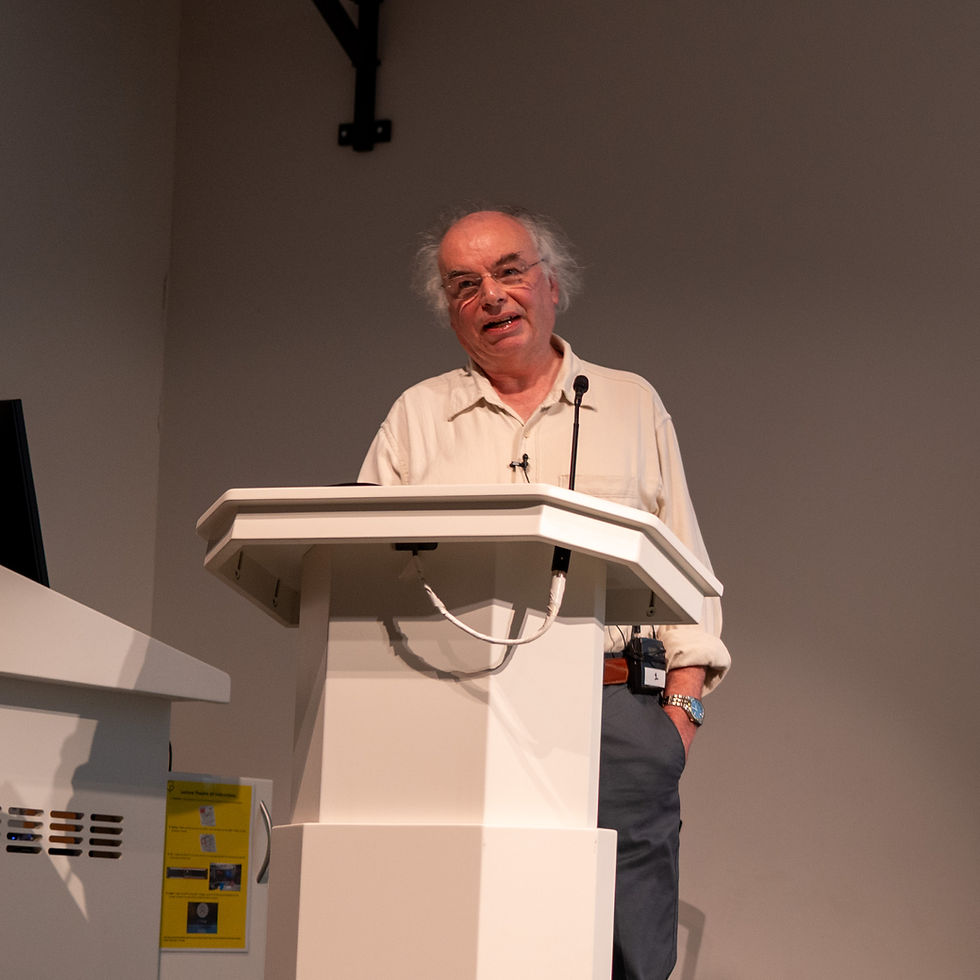The Chemistry of the Universe, by Professor Mike Edmunds
- Yvonne Jacobs

- Oct 19
- 2 min read
Our 2025/26 season of main lectures continued with its second fascinating instalment.
The evening got off to a great start with a private viewing of the Astronomy Photographer of the Year exhibition for our members, provoking friendly discussions and debates over personal favourites.
Then everyone moved into the lecture theatre for the sold-out talk. As well as our usual members’ photos - this time focusing on the Sun and the Moon - we were also treated to a wonderful review in pictures of the trip to La Palma.
Alec then gave his members’ talk, a presentation on the night sky this month, covering everything from comets and planets to meteor showers and deep-sky objects - lots of things to look out for, for members of all experience levels.

The crowd was now fully warmed up for the main event: The Chemistry of the Universe, presented by Professor Mike Edmunds.
We learnt about the origins of the chemical compositions of the Earth, the Sun, the asteroid belt and even interstellar space. The make-up of other stars can be very diverse, depending on their composition, density and pressure.

It’s possible to deduce the chemicals present just three minutes after the Big Bang, as well as to work out where most of the subsequent elements came from, through various star formations and demises. Who would have guessed gold is formed in colliding neutron stars?
There are even possibilities for a chemical computer, the use of AI to accelerate discoveries, and the potential for astronomers to piggyback on research by drug companies.

The different chemical compositions of biological systems were discussed, leaving us pondering what life may be found in the universe by biosignature analysis of distant stars and exoplanets, as well as the other planets in our own Solar System. There is a very exciting future ahead, detecting life by looking at different chemistries.
The evening concluded with a round-up of upcoming events, including our next main lecture, which is now on 24 November.

















Comments